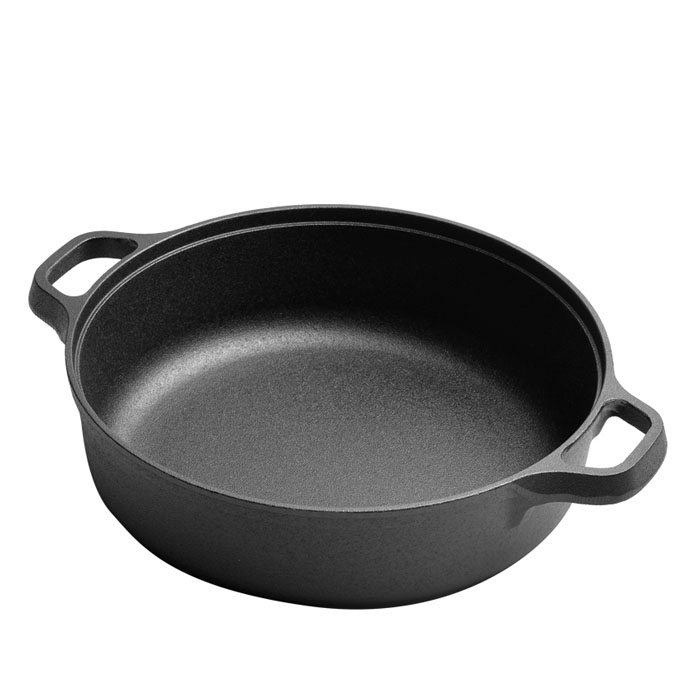
fry egg cast iron
The Art of Frying Eggs in a Cast Iron Skillet
Frying an egg may seem like one of the simplest culinary tasks, yet it holds a special place in the realm of cooking that transcends its basic nature. When executed with care and the right tools, such as a cast iron skillet, the humble fried egg can transform into a delicious centerpiece for breakfast, brunch, or even dinner. In this article, we will delve into the art of frying eggs in a cast iron skillet, exploring why this method is favored by many and how to achieve that perfect, golden result.
Why Cast Iron?
Cast iron skillets are renowned for their excellent heat retention and distribution qualities. Unlike other types of cookware, cast iron provides a consistent cooking surface, which is crucial when frying eggs. This allows for even cooking and prevents the dreaded hot spots that can lead to burnt or unevenly cooked eggs. Moreover, cast iron pans develop a natural non-stick surface when properly seasoned, making them perfect for frying eggs without the need for excessive oil or butter.
Preparing the Skillet
Before you can fry the perfect egg, it’s vital to prepare your cast iron skillet. If your skillet is well-seasoned, it will enhance the flavor of your egg while also ensuring a non-stick experience. To keep your skillet in top shape, clean it with a brush and avoid using soap, which can strip away the seasoning. Instead, after cooking, wipe it down with a paper towel or rinse it with hot water and dry it immediately to prevent rusting.
The Perfect Frying Technique
1. Preheat Your Skillet Start by preheating your cast iron skillet on medium-low heat. Allowing the skillet to warm up gradually will help avoid any sticking. A properly heated skillet is essential for creating a perfect crust on the egg.
fry egg cast iron

2. Adding Fat Once the skillet has reached the desired temperature, add a generous amount of fat—either butter or cooking oil. Butter adds richness while oil can provide a higher smoke point. Swirl the fat around the skillet until it melts and coats the surface evenly.
3. Cracking the Egg Gently crack the egg into a small bowl to check for any shell fragments and to avoid splashing, then slide it into the skillet. The sizzle should be immediate, indicating that the heat is just right.
4. Cooking Time Monitor the egg as it cooks. If you prefer a sunny-side-up egg, allow it to cook undisturbed until the whites are set but the yolk remains runny. For over-easy eggs, carefully flip it after a few minutes and cook for an additional 30 seconds to a minute.
5. Seasoning Just before the egg is done, season it with a pinch of salt and pepper. This step enhances the egg's flavor and makes for a delightful dining experience.
Serving Suggestions
Fried eggs are incredibly versatile. Serve them atop a buttery slice of toast, mixed into a salad, or alongside crispy bacon and fresh avocado for a wholesome meal. The beautiful golden yolk can also serve as a luscious sauce, elevating any dish.
In conclusion, frying an egg in a cast iron skillet is not just a cooking method; it’s an experience that combines science and art. With practice, anyone can master the technique, producing perfectly fried eggs that are both flavorful and visually appealing. Embrace the process, and enjoy the delicious outcomes!
-
Authentic Traditional Chinese Wok for High-Performance CookingNewsAug.02,2025
-
Season Cast Iron Perfectly with GPT-4 Turbo TipsNewsAug.01,2025
-
High Quality Cast Iron Cookware - Baixiang County Zhongda MachineryNewsAug.01,2025
-
Premium Cast Iron Pan: Durable & Perfect HeatNewsAug.01,2025
-
High Quality Kitchen Durable Black Round Cast Iron Cookware Pancake Crepe Pan-Baixiang County Zhongda Machinery Manufacturing Co., Ltd.NewsAug.01,2025
-
Cast Iron Cookware - Baixiang County Zhongda Machinery | Nonstick, Heat ResistanceNewsAug.01,2025


